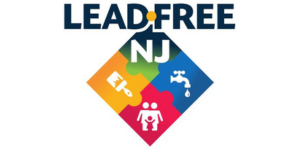New Jersey Future Blog
Debt is Not a Bad Word: Funding New Jersey’s Infrastructure through Smart Financing
February 18th, 2025 by Jessika Sherman
The following feature was originally published in the February 2025 edition of NJ Municipalities Magazine, which has been relied upon by local government leaders, department heads and administrators for over 100 years. NJ Municipalities is read by over 6,000 readers each month. You can read an online version, or view the pdf of the print edition.
Municipalities face a tricky balancing act when it comes to infrastructure improvements: they need to address large, costly projects but have limited resources to fund them. Historically, issuing debt has been the primary means that municipalities are left with to finance critical improvements. However, municipal leaders are reluctant to be the ones responsible for issuing debt, while utilities and public systems are often hesitant to raise rates to cover project costs.
The reluctance to take on debt is understandable, especially when debates over the federal debt ceiling and spending often dominate headlines. Concerns over affording the debt service, balancing the budget, raising enough revenues, and not wanting to burden taxpayers or ratepayers are valid. These issues span from the smallest municipalities to the federal government. By assisting municipalities and small-to medium-sized water systems in accessing funding for vital water infrastructure projects, New Jersey Future’s Funding Navigator program has come to appreciate these challenges. While grant programs and federal funding provide some relief, such as the Infrastructure Investment and Jobs Act (aka the Bipartisan Infrastructure Law) and the American Rescue Plan Act, these funds are limited and temporary.
Programs like Clean Water and Drinking Water State Revolving Funds (SRFs) provide municipalities with more accessible options for financing critical infrastructure projects. The New Jersey Water Bank (NJWB), a partnership between the New Jersey Infrastructure Bank (I-Bank) and the New Jersey Department of Environmental Protection (NJDEP), offers low-interest loans to support clean water and drinking water infrastructure projects. In addition to the Water Bank, the I-Bank provides low-interest loans for other essential infrastructure through the Transportation Infrastructure Bank and the Resilience Infrastructure Bank. These funding sources are fundamental to addressing the state’s infrastructure needs. When paired with effective planning and sound financial management practices, they help mitigate the risks commonly associated with taking on debt.
“If you set a plan and follow the plan, it helps you avoid an emergency. When you do things in an emergency, you pay more for it and can’t plan as efficiently,” explains Thomas Horn, Executive Director of the Lambertville Municipal Utilities Authority. Horn’s experience highlights the significant potential benefits of State Revolving Fund (SRF) low-interest loans. The municipality utilizes a 30-year infrastructure plan that allows it to anticipate water system needs well in advance. By leveraging low-interest loans from the I-Bank, they have made essential system upgrades while developing a fair and sustainable rate structure to manage the debt service.
Lambertville’s proactive approach helps avoid the high costs and inefficiencies associated with emergency repairs. Horn also acknowledges a perspective shared by many municipal leaders: while no one likes taking on debt, sometimes it is necessary. “It’s like a mortgage,” he says. “Very few systems and towns have the resources to fund large infrastructure improvements outright.” Lambertville’s experience underscores the importance of long-term planning and strategic financing in maintaining critical infrastructure.
Strong financial management practices can help municipalities, utilities, and taxpayers benefit from strategic debt use. For municipalities and utilities, debt provides enhanced project funding by facilitating large-scale infrastructure projects with access to capital markets with favorable interest rates, such as those offered by the Water Bank. As Lambertville has demonstrated, loans provide the financial resources needed for critical improvements without placing an immediate strain on existing funds, enabling municipalities to focus on strategic planning and implementation. This approach ensures that cash reserves are preserved for true emergencies, while a structured repayment schedule spreads costs over time, aligning debt service with the lifespan of the infrastructure. By reducing upfront costs, debt can accelerate project timelines, which is essential for addressing urgent needs.
Even municipalities or utilities with sufficient cash reserves can benefit from debt. Low-interest loans are particularly advantageous when their rates are lower than the returns on cash reserves or fund balances, which can be saved for unexpected delays or misaligned payment schedules. Beyond financial stability, infrastructure improvements driven by strategic debt use make municipalities more competitive by attracting businesses and residents, ultimately strengthening the local economy and increasing ratables, which can help fund the debt service over time.
Taxpayers and ratepayers can also benefit from this approach. Infrastructure investments generate jobs and economic stimulation during the planning and construction phases while offering long-term benefits like modernization and enhanced service reliability. Improved infrastructure leads to better service delivery and greater safety for utilities and water systems. Furthermore, debt payments distribute the cost of these improvements over their useful life, ensuring that future users contribute to funding and avoiding hefty, one-time tax or rate increases. Proper planning, as demonstrated by Lambertville, is critical for avoiding costly and disruptive emergencies and ensuring that communities’ financial and service needs are met effectively.
The reality is that, much like the nation as a whole, New Jersey faces costly and urgent infrastructure challenges. According to the U.S. Environmental Protection Agency, addressing all the necessary improvements and repairs for drinking water and clean water infrastructure in New Jersey alone will require an estimated $31.6 billion. In 2021, the U.S. received a C- rating from the Report Card for America’s Infrastructure, while in 2016, New Jersey received a D+ rating, highlighting the dire need for investment. As a coastal state, New Jersey is particularly vulnerable to flooding and the impacts of climate change, making infrastructure improvements and resilience efforts more critical than ever. Debt is not a bad word—it is a vital tool that enables municipalities to address these challenges without overwhelming current resources when used strategically and with sound financial management. By leveraging debt effectively, New Jersey can build the resilient, modern infrastructure needed to support its communities and secure a sustainable future.
Related Posts
Tags: debt, financial assistance, funding, funding navigator, infrastructure, water infrastructure
















